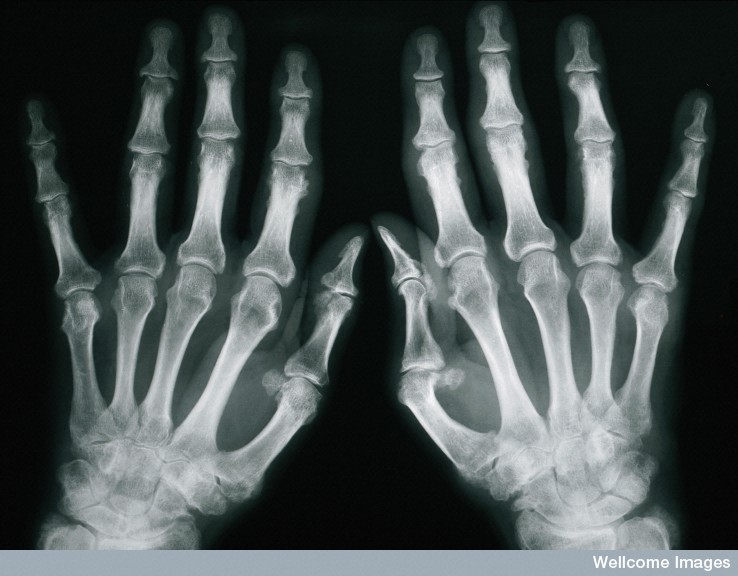A new study has revealed psoriatic arthritis may be activated by the same trigger in different patients.

Researchers from the University of Oxford and the Wellcome Sanger Institute identified high levels of a specific receptor in immune cells from psoriatic arthritis patients, giving the strongest evidence yet of a single cause for the disease.
Published in Nature Communications, this study, supported by the NIHR Oxford Biomedical Research Centre, could lead to finding the exact molecular ‘trigger’ and gives hope for developing a targeted treatment in the future.
A third of patients with the skin condition psoriasis, will develop psoriatic arthritis, which typically causes affected joints to become swollen, stiff and painful.
Psoriatic arthritis is a long-term condition that can get progressively worse over time. While some treatments are available there is currently no cure, and in severe disease the joints can become permanently damaged, needing surgery.
It was already known that the disease had a number of genetic predispositions, one of which controls how immune cells called T cells see antigen molecules from disease-causing microorganisms. However, it is not understood exactly what triggers the onset of psoriatic arthritis in patients.
Using cutting-edge single cell technology, the researchers analysed thousands of individual immune cells from fluid drained from the knees of patients with psoriatic arthritis. They could see which genes were switched on in each cell and showed these T cells had an activated inflammatory profile.
The researchers also amplified and sequenced the RNA from receptor genes, to identify active T cell receptors in each cell. The study showed that many T cells in the joint fluid shared an identical T cell receptor and were therefore clones of each other. These were very likely to have been triggered to reproduce themselves by a particular antigen.
Using machine learning to compare these receptors from different patients, they discovered that the expanded clones of T cells were potentially recognising something in common. These cells also shared other markers, including a receptor called CXCR3that directed them to the inflammation site.
Dr Hussein Al-Mossawi, Honorary Research Associate at the Nuffield Department of Orthopaedics, Rheumatology and Musculoskeletal Sciences (NDORMS) at the University of Oxford, said: “Our data suggest that psoriatic arthritis doesn’t just appear out of nowhere. Each receptor is like a unique lock that recognises a molecular key and we discovered that across the patients they are recognising a common molecule.
“This gives the first evidence that the T cells are seeing and reacting to the same molecule, which acts as a trigger for the disease. We don’t know the exact culprit yet, but this a great step forward in understanding the disease.”
The large-scale single-cell data from the joints and blood of psoriatic arthritis patients were then used to investigate how the T cells could transfer from the blood to the joint to cause the damage.
Dr Sam Behjati, Group Leader and Wellcome Trust Intermediate Clinical Fellow at the Wellcome Sanger Institute, commented: “Our study produced the largest single-cell dataset from psoriatic arthritis patients to date. It is helping us to understand the intricate mechanisms behind psoriatic arthritis, including starting to unravel the signals that tell the T cells to cross over into the joint fluid. Imagine the cells as train passengers with a ticket that tells them at which station to get off – the single cell data is allowing us to read that destination for each cell, and understand the signals.”
Professor Paul Bowness, Professor of Experimental Rheumatology at NDORMS, said: “Our findings indicate that specific T cells are likely to be targeted to enter the joint, where they are triggered to expand, creating inflammation and causing psoriatic arthritis. “The next stage of research will be to find the key that is unlocking the disease in patients – from the signals that direct cells to the joint, to what then triggers them to expand. If we can understand these, we could move towards creating therapies that would prevent this, potentially providing a cure.”